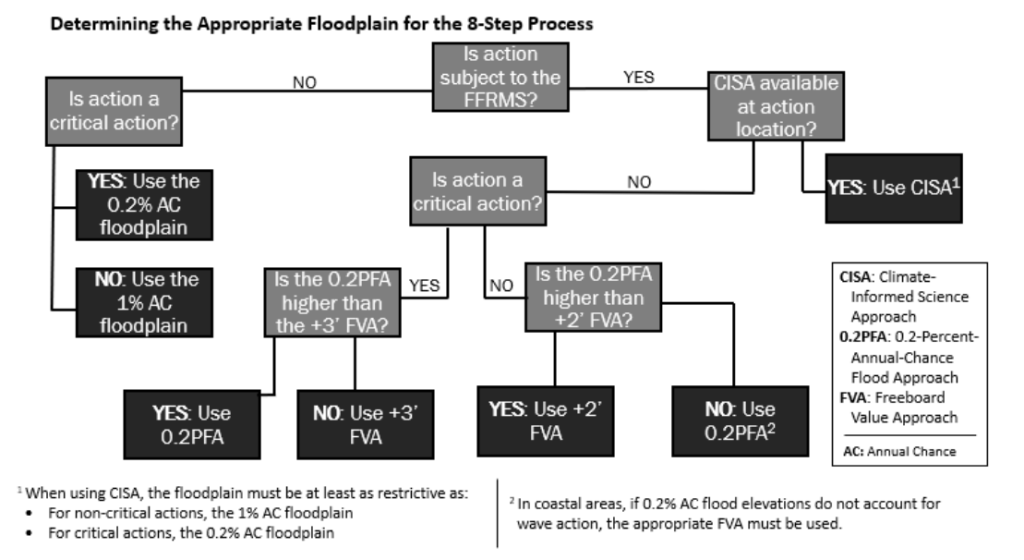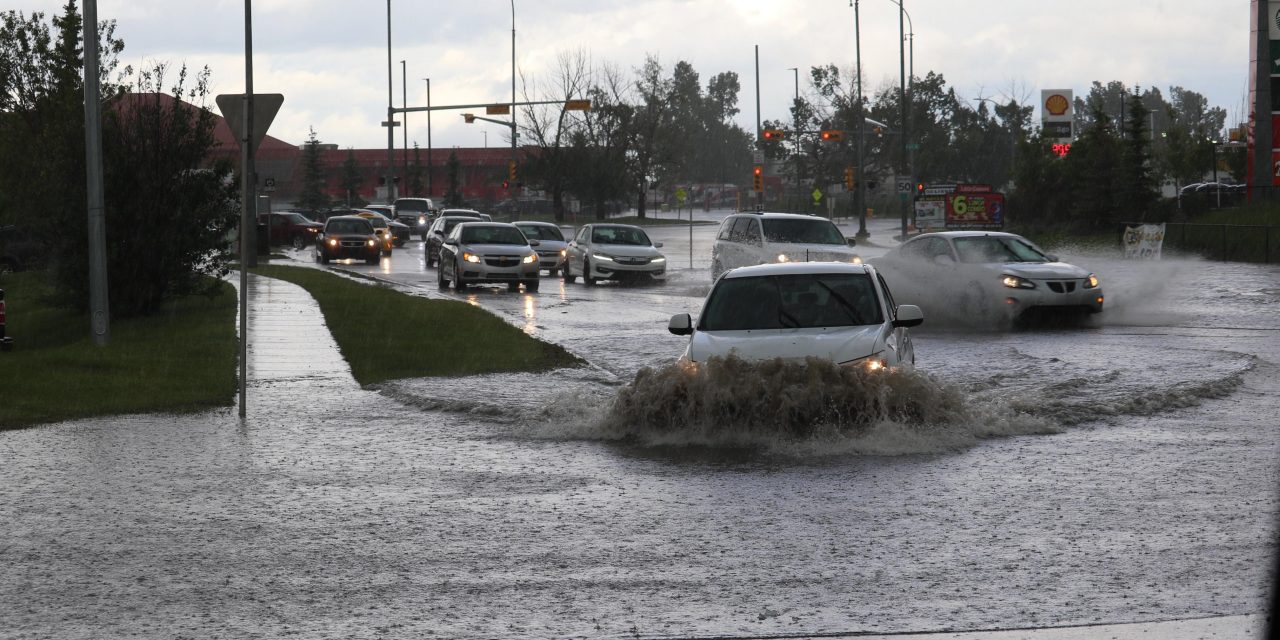In 2020, climate researchers with the First Street Foundation (New York City) compared their flood-risk models to U.S. Federal Emergency Management Agency (FEMA) maps, and the differences were stark. Findings revealed that the owners of 5.9 million U.S. properties likely faced substantial flood risks despite their exclusion from FEMA-recognized floodplains.
In an effort to better incorporate current climate science into federal floodplain designations, FEMA implemented the Federal Flood Risk Management Standard (FFRMS) policy on Sept. 9, 2024. The rule expands the coverage of regulatory floodplains and holds federally funded projects within those floodplains to more stringent resilience standards, applying to new constructions, significant improvements, climate adaptation measures, and substantial repairs to damaged structures.
Addressing Growing Flood Risks
Before the implementation of the FFRMS, FEMA considered critical construction projects — such as fire and police stations, hospitals, and facilities storing hazardous materials — subject to flood-resilience requirements if they were in an area susceptible to the 500-year flood event. Other projects had to safeguard against the 100-year flood.

The FFRMS incorporates the latest scientific data to expand floodplain areas, accounting for both current and future risks. Developers, designers, and FEMA now will determine whether their projects reside in a regulatory floodplain based on three sets of criteria that incorporate both potential flood elevation (how high) and extent (how wide) for the project site:
- Climate Informed Science Approach (CISA): CISA is the standard method and contains the best-available, actionable hydrologic and hydraulic data. CISA incorporates current and future changes in flooding based on climate science; however, it is not available in all regions.
- Freeboard Value Approach (FVA): FVA defines the floodplain as 0.91m (3 ft) above the 100-year flood elevation for critical projects and 0.6 m (2 ft) above the 100-year flood elevation for non-critical projects.
- 500-year floodplain: The area subject to flooding by the 500-year flood.
FEMA has provided a job aid to help planners determine which approach is most appropriate in a given region in addition to a web-based application to help determine whether a project is subject to the FFRMS floodplain. Acknowledging that meeting the new FFRMS standards often will entail increased capital costs, FEMA announced that the federal government will cover up to 75% of the costs associated with compliance.
The FFRMS already has been implemented by the U.S. departments of Agriculture, Defense, Health and Human Services, Housing and Urban Development, Interior, as well as the U.S. General Services Administration and is part of a broader federal strategy to enhance climate resilience.
Stormwater Community Offers Mixed Response
While stormwater professionals agree that incorporating the latest climate data into floodplain determinations is a positive, the new policy may see some pushback, particularly with engineers and within small communities.
“The design of stormwater infrastructure, such as green infrastructure, detention ponds, or closed storm sewer systems, need to consider both regulatory and non-regulatory floodplains,” said Alexander Miller, Second Vice Chair of the Water Environment Federation (WEF; Alexandria, Virginia) Stormwater Community. “Increases to floodplain extents and elevations will limit available land for stormwater management. For instance, potential locations for detention ponds may be restricted as floodplains expand to account for future climate conditions.”
In one example, Miller — a Florida-based water resources engineer for HDR (Tampa) — described the FFRMS’ potential to complicate the design of stormwater pump stations in coastal communities.
“To meet new requirements, these examples of critical stormwater infrastructure may need to be raised and/or located farther inland,” he said. “Costs for stormwater projects may increase and professionals may need to be creative when designing stormwater management solutions.”
Sanjiv K. Sinha, CEO and Board Member of Corvias Infrastructure Solutions (Ann Arbor, Michigan), echoed concerns that the new guidelines may present both technical and optical hurdles.
“While I have a strong positive opinion of FFRMS, the new framework presents some challenges related to cost, complexity, and local adaptation. For example, some local governments with limited budgets may push back, and many small governmental units will need assistance because they can lack technical know-how,” Sinha said. “Finally, some communities may push back due to their perception of federal overreach. So, the overall effectiveness and reception of these standards will depend on how well these factors are balanced.”
However, the FFRMS may cause communities to adopt a more forward-thinking approach to flood mitigation.
“My hope is that this will allow communities to be proactive in their flood risk approach,” said Ryan Brown, Technical Solutions Engineer for Autodesk Water Infrastructure (San Francisco), adding that he hoped this policy would encourage communities to consider budgeting for disaster prevention as opposed to disaster recovery.
Facing a ‘Tricky’ Path to Implementation
Stormwater professionals also noted concerns about the way FEMA will implement the rule as well as the agency’s staffing and resource capacity.
“The new FFRMS is a good objective with appropriate principles, but I am not confident that implementation will be consistent and skillfully obtained,” said Gary Moore, Civil Engineering Program Director for the University of Missouri-St. Louis and Washington University (St. Louis). “If there can be a reasonable and easy-of-use consensus climate model, then the implementation will be favorable.”
“I think the idea is wonderful, protecting our residents and vital facilities from future flooding. However, implementation of programs such as this can be tricky,” added Caroline Burger, Chief Stormwater Technologist for Carollo Engineers (Walnut Creek, California). “FEMA staff and partners are already overworked, so I am unsure if adding yet another duty to their full plates will help streamline their existing workload or exacerbate it.”
Learn more about FEMA’s Federal Flood Risk Management Standard at the agency’s website.
Top image courtesy of Chris “CJ” Johnson/Pixabay

ABOUT THE AUTHOR
Michelle Kuester is a staff member of the Water Environment Federation, where she serves as Associate Editor of Stormwater Report and Water Environment & Technology magazine. She can be reached at mkuester@wef.org.






